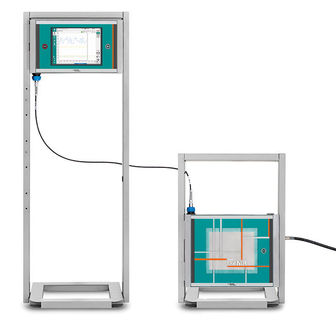Mallory-Weiss syndrome
Classification & external resources
| ICD-10
| K22.6
|
| ICD-9
| 530.7
|
| DiseasesDB
| 7803
|
| eMedicine
| ped/1359
|
| MeSH
| D008309
|
Mallory-Weiss syndrome refers to bleeding from tears (a Mallory-Weiss tear) in the mucosa at the junction of the stomach and esophagus, usually caused by severe retching, coughing, or vomiting.
Causes
It is often associated with alcoholism[1] and eating disorders and there is some evidence that presence of a hiatal hernia is a required predisposing condition.
Presentation
Mallory-Weiss syndrome often presents as an episode of vomiting up blood (hematemesis) after violent retching or vomiting, but may also be noticed as old blood in the stool (melena), and a history of retching may be absent.
In most cases, the bleeding stops spontaneously after 24-48 hours, but endoscopic or surgical treatment is sometimes required and rarely the condition is fatal.
Diagnosis
Definitive diagnosis is by endoscopy.
Treatment
Treatment is usually supportive as persistent bleeding is uncommon. However cauterization or injection of epinephrine[2] to stop the bleeding may be undertaken during the index endoscopy procedure.
Very rarely embolization of the arteries supplying the region may be required to stop the bleeding.
History
The condition was first described in 1929 by G. Kenneth Mallory and Soma Weiss in 15 alcoholic patients.[3]
See also
References
- ^ Caroli A, Follador R, Gobbi V, Breda P, Ricci G (1989). "[Mallory-Weiss syndrome. Personal experience and review of the literature]" (in Italian). Minerva dietologica e gastroenterologica 35 (1): 7–12. PMID 2657497.
- ^ Gawrieh S, Shaker R (2005). "Treatment of actively bleeding Mallory-Weiss syndrome: epinephrine injection or band ligation?". Current gastroenterology reports 7 (3): 175. PMID 15913474.
- ^ Weiss S, Mallory GK. Lesions of the cardiac orifice of the stomach produced by vomiting. Journal of the American Medical Association 1932;98:1353-55.
- Cecil Textbook of Medicine
- The Oxford Textbook of Medicine
| Digestive system - Gastroenterology (primarily K20-K93, 530-579) |
|---|
| Esophagus | Esophagitis - GERD - Achalasia - Boerhaave syndrome - Nutcracker esophagus - Zenker's diverticulum - Mallory-Weiss syndrome - Barrett's esophagus |
|---|
Stomach/
duodenum | Peptic (gastric/duodenal) ulcer - Gastritis - Gastroenteritis - Duodenitis - Dyspepsia - Pyloric stenosis - Achlorhydria - Gastroparesis - Gastroptosis - Portal hypertensive gastropathy |
|---|
| Hernia | Inguinal (Indirect, Direct) - Femoral - Umbilical - Incisional - Diaphragmatic - Hiatus |
|---|
| Noninfective enteritis and colitis | IBD (Crohn's, Ulcerative colitis) - noninfective gastroenteritis |
|---|
| Other intestinal | vascular (Abdominal angina, Mesenteric ischemia, Ischemic colitis, Angiodysplasia) - Ileus/Bowel obstruction (Intussusception, Volvulus) - Diverticulitis/Diverticulosis - IBS
other functional intestinal disorders (Constipation, Diarrhea, Megacolon/Toxic megacolon, Proctalgia fugax) - Anal fissure/Anal fistula - Anal abscess - Rectal prolapse - Proctitis (Radiation proctitis) |
|---|
| Liver/hepatitis | Alcoholic liver disease - Liver failure (Acute liver failure) - Cirrhosis - PBC - NASH - Fatty liver - Peliosis hepatis - Portal hypertension - Hepatorenal syndrome |
|---|
| Accessory digestive | Gallbladder (Gallstones, Choledocholithiasis, Cholecystitis, Cholesterolosis, Rokitansky-Aschoff sinuses)
Biliary tree (Cholangitis, Cholestasis/Mirizzi's syndrome, PSC, Biliary fistula, Ascending cholangitis)
Pancreas (Acute pancreatitis, Chronic pancreatitis, Pancreatic pseudocyst, Hereditary pancreatitis) |
|---|
| Other/general | Appendicitis - Peritonitis (Spontaneous bacterial peritonitis)
Malabsorption (celiac, Tropical sprue, Blind loop syndrome, Whipple's)
postprocedural: Gastric dumping syndrome - Postcholecystectomy syndrome
bleeding: Hematemesis - Melena - Gastrointestinal bleeding (Upper, Lower) |
|---|
| See also congenital |
|







